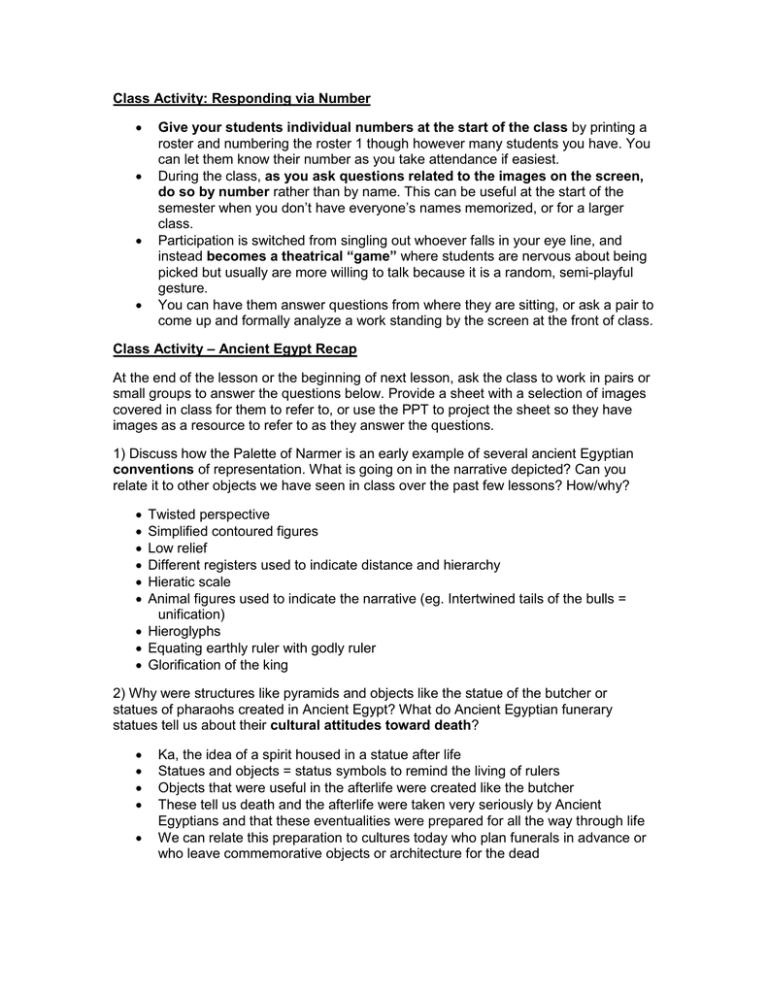Class Activity: Responding via Number Give your students individual
advertisement

Class Activity: Responding via Number Give your students individual numbers at the start of the class by printing a roster and numbering the roster 1 though however many students you have. You can let them know their number as you take attendance if easiest. During the class, as you ask questions related to the images on the screen, do so by number rather than by name. This can be useful at the start of the semester when you don’t have everyone’s names memorized, or for a larger class. Participation is switched from singling out whoever falls in your eye line, and instead becomes a theatrical “game” where students are nervous about being picked but usually are more willing to talk because it is a random, semi-playful gesture. You can have them answer questions from where they are sitting, or ask a pair to come up and formally analyze a work standing by the screen at the front of class. Class Activity – Ancient Egypt Recap At the end of the lesson or the beginning of next lesson, ask the class to work in pairs or small groups to answer the questions below. Provide a sheet with a selection of images covered in class for them to refer to, or use the PPT to project the sheet so they have images as a resource to refer to as they answer the questions. 1) Discuss how the Palette of Narmer is an early example of several ancient Egyptian conventions of representation. What is going on in the narrative depicted? Can you relate it to other objects we have seen in class over the past few lessons? How/why? Twisted perspective Simplified contoured figures Low relief Different registers used to indicate distance and hierarchy Hieratic scale Animal figures used to indicate the narrative (eg. Intertwined tails of the bulls = unification) Hieroglyphs Equating earthly ruler with godly ruler Glorification of the king 2) Why were structures like pyramids and objects like the statue of the butcher or statues of pharaohs created in Ancient Egypt? What do Ancient Egyptian funerary statues tell us about their cultural attitudes toward death? Ka, the idea of a spirit housed in a statue after life Statues and objects = status symbols to remind the living of rulers Objects that were useful in the afterlife were created like the butcher These tell us death and the afterlife were taken very seriously by Ancient Egyptians and that these eventualities were prepared for all the way through life We can relate this preparation to cultures today who plan funerals in advance or who leave commemorative objects or architecture for the dead








